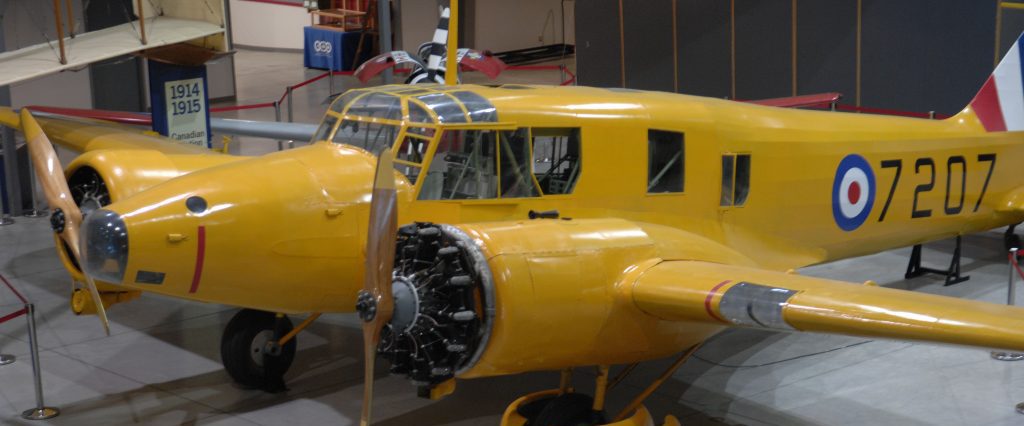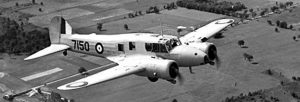
In the 1930s A.V. Roe Company (Britain) built the Avro Anson as a reconnaissance airplane for the RAF. The aircraft began its military service in 1936, becoming the RAF’s first monoplane with a retractable undercarriage. It served in the early years of the war as a light bomber and coastal patrol aircraft. The Anson was severely limited in range, re-power and bomb load and was soon limited to training, transport and other non-combat roles. By 1940 it was being replaced by the Lockheed Hudson and the Armstrong Whitworth Whitley.
In the early days of the British Commonwealth Air Training Plan (BCATP), the Anson was selected as the primary twin-engine aircraft for the training of pilots, observers, wireless- operators, and bomb aimers. Over 20,000 aircrew received their training on the aircraft.
As a training aircraft, the Anson was easy to manage and fly. Most Ansons were declared surplus at war’s end and many were immediately destroyed. Some were sold to farmers who used their electrical, mechanical, and other parts for various purposes on the farm.
The National Air Force Museum of Canada Avro Anson Mark II fuselage and various assorted pieces were acquired with the assistance of Mr. Byron Reynolds, from the Reynolds Aviation Museum in Wetaskiwin, Alberta, in October 2005. The aircraft had been lying unprotected in a field for perhaps 60-plus years.
The National Air Force Museum of Canada completed the restoration of the Avro Anson in 2017.
Tail #: unknown
Wingspan: 17.22 m Length: 12.88 m Height: 3.99 m
Max Weight: 3 470 kg
Max Speed: 303 km/h
Role: Reconnaissance and Trainer
In service: 1940-1952

